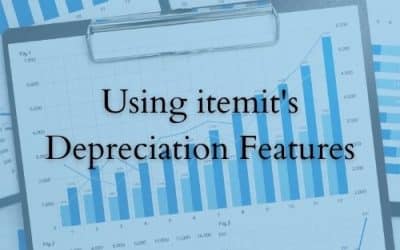Fixed asset tracking is essential when your business is trying to find ways to save time and money. The benefits are clear. When you track your fixed assets, you avoid tax and insurance risks, lose fewer assets, purchase fewer duplicates and create an effective accountability trail.
Is a spreadsheet good enough to handle this? The short answer is no. A spreadsheet is good for logging which assets you own, but then further than that you’ll start to lose money. Every time an asset is decommissioned, moves or is damaged, a spreadsheet becomes incomplete and so the money you’ve saved is completely lost.
Fixed asset tracking software gives you a return on investment so, while it isn’t free, you end up with more time and money than you would if you were using a spreadsheet for your fixed asset register.
The Best Way To Log Fixed Assets
You may already be logging your assets onto a spreadsheet and using this as your fixed asset register. This isn’t the best way of doing things as spreadsheets create accountability risks and gaps.
The concept is clear, though, you need to log each of your assets (a row) and add data and information against them (a column). The reason that a spreadsheet is so unwieldy is that every time an asset changes, single cells change and it can be difficult to pinpoint what needs editing.
This is where fixed asset management software comes in. With fixed asset management software, instead of logging your assets as rows, you log them as unique, digital profiles.
Then, you can add data to these profiles, such as maintenance reminders, usage history and assignees, to indicate which of your colleagues is responsible for the asset.
This automatically gets pulled into a fixed asset register that you can export as a pdf or spreadsheet. So, you still get the benefits of a spreadsheet without the risks they create.
Tracking Depreciation & Lifecycle
One of the best ways to track your fixed assets is tracking their lifecycle. This allows you to extend asset usage and get more out of your assets, a cost-saving benefit that is often overlooked.
Not only does more transparency and control over your asset register mean that you purchase fewer duplicate assets, but it also means that you purchase assets less frequently in general.
This is why tracking maintenance, using reminders and issues management, and tracking how your assets are depreciating is essential. Knowing the value of your overall asset register is critical for auditing, but also gives you a good idea of how up to date your asset register is and shows you if there are any gaps.
Tracking Asset Locations & Usage
Another way to track if there are gaps or issues in your asset register is by tracking asset locations and usage. There are a few ways to do this in the best fixed asset management software.
Primarily, you can use fixed asset tags and last seen GPS location tracking. This works by allowing you to attach a tag to your assets and scan it with your smartphone.
Every time you scan an asset’s tag, the last seen location is updated automatically and the asset’s profile opens. This means, for example, if you notice a misplaced laptop, you need only scan that asset’s tag to view who it belongs to. In doing so, you’re also adding to the laptop’s location trail and automatically adding to a larger picture of where the asset has been.
You can also track locations more manually, using bulk adding, removing and scanning functionalities. This allows you to bulk assign assets to users, to indicate who has what, or bulk move assets from one location to another. In other words, if twenty assets are entering storage, you can log it as such simply by bulk scanning the twenty assets’ tags.
itemit’s Fixed Asset Management Software
itemit’s fixed asset management software gives you the highest levels of accountability, transparency and control over your assets. With itemit, you can monitor where your assets have been, how they’re behaving and who is responsible for them.
This is coupled with powerful tagging and tracking technologies, as you can mix and match RFID asset tracking with GPS trackers and QR code asset management. This means that your assets never have to go missing again.
To find out more about why itemit gives you the best ways to track your fixed assets, you can contact the friendly team at team@itemit.com. If you’re ready to dive in, you can also start your 14-day free trial by entering your details into the form below. Fixed asset tracking is easy when you use itemit.
Fixed Assets
Choose a better way to track your assets
Start your free 14-day trial now
Instant access. No credit card details required.
Related articles
5 Reasons Fixed Asset Management Software Is Worth The Investment Today
Take control of your fixed assets today by introducing modern-day fixed asset management software to your business. ROI within one year. Instant free trial.
Using itemit’s Depreciation Features
Find out how to use itemit’s depreciation features in your fixed asset tracking processes. Save time and money with more visibility over your assets.
The Benefits Of Fixed Asset Tagging
What are the benefits of fixed asset tagging? From saving time to saving money, there are a lot of helpful features fixed asset tagging software provides.




